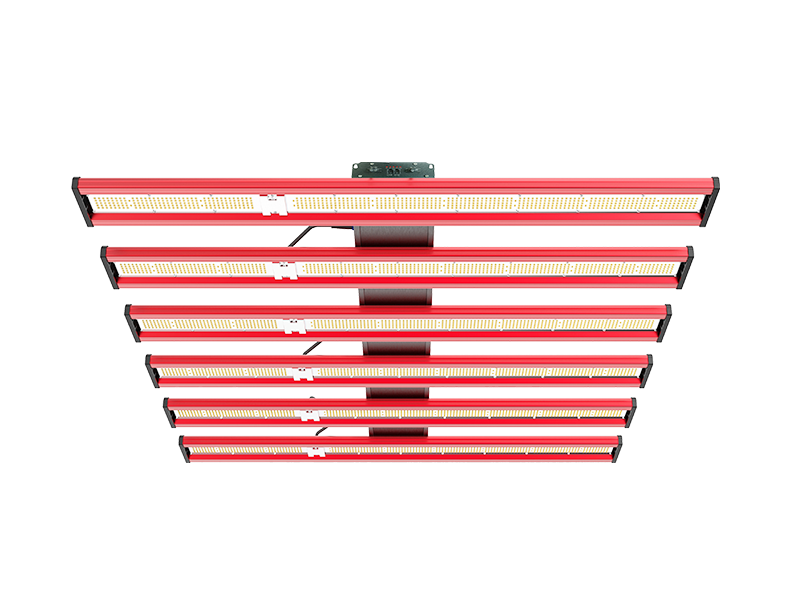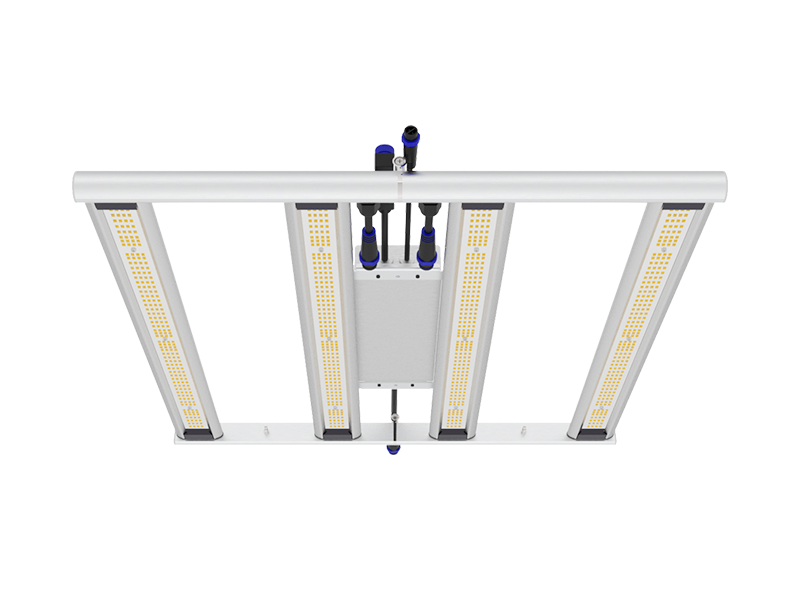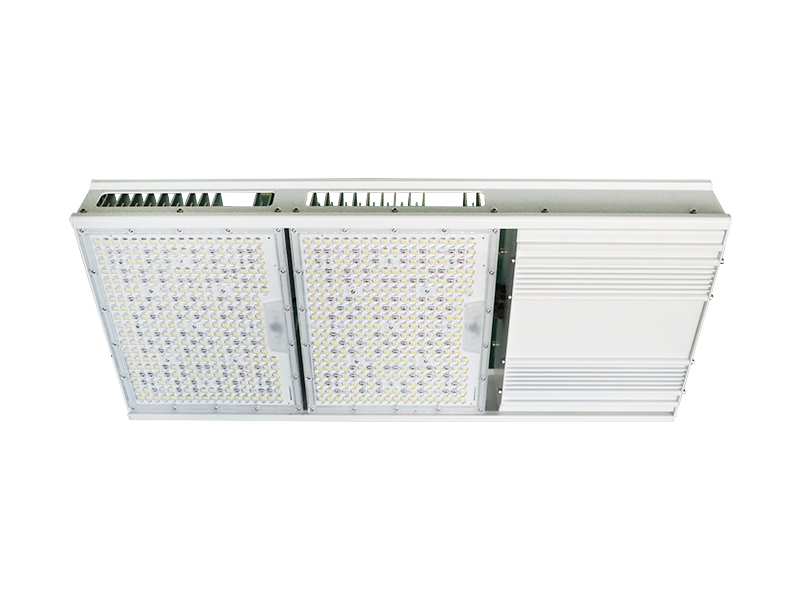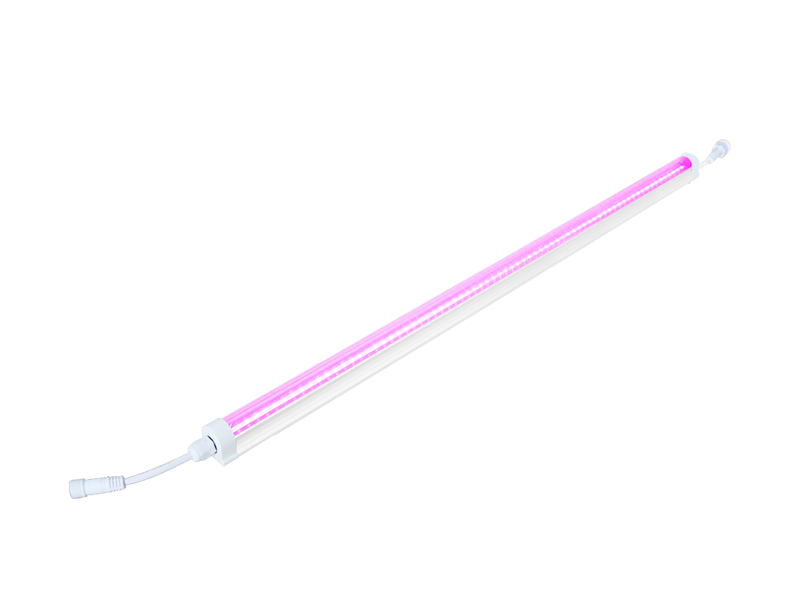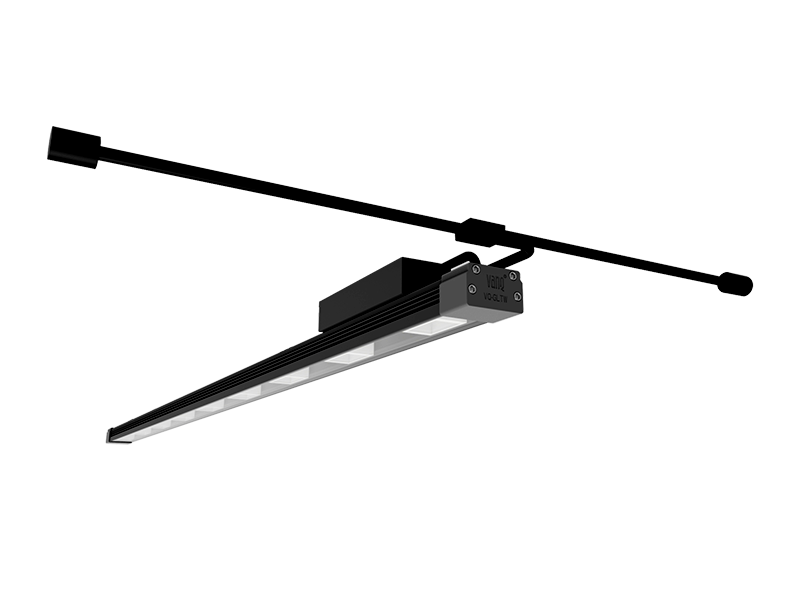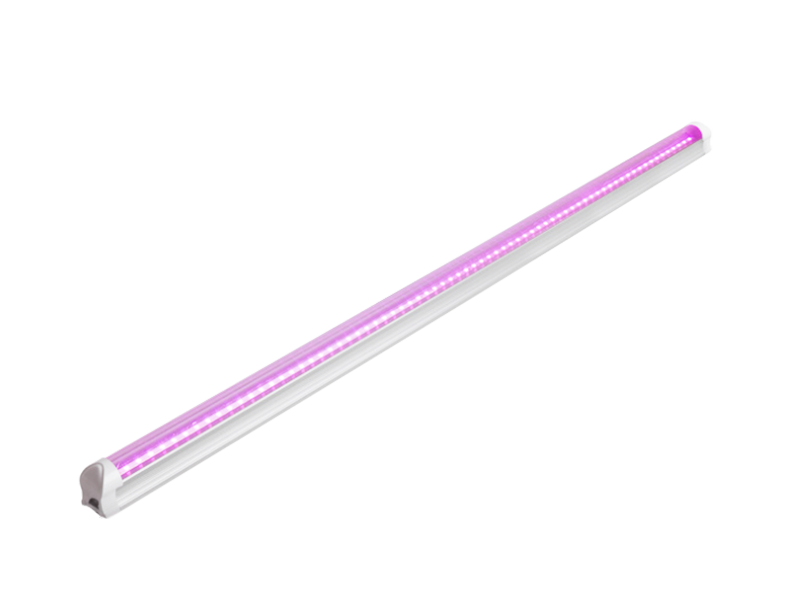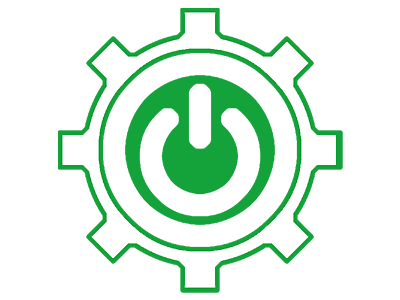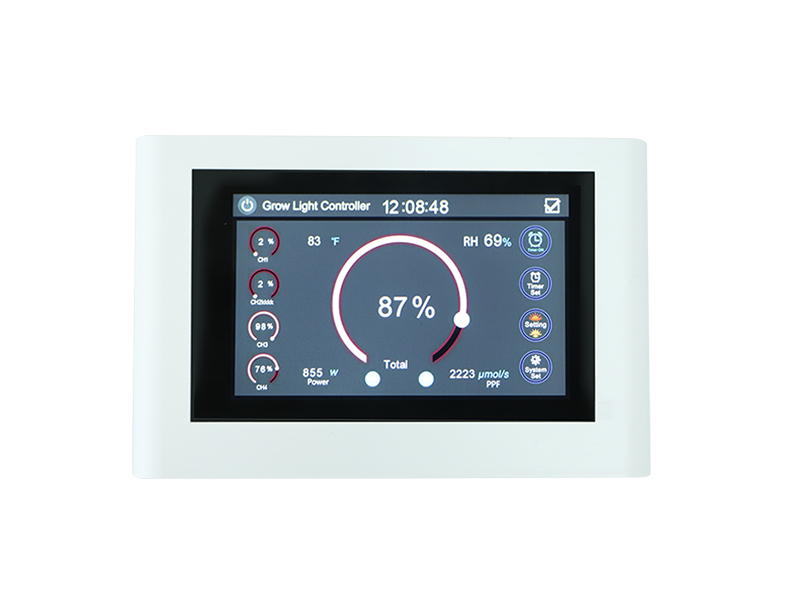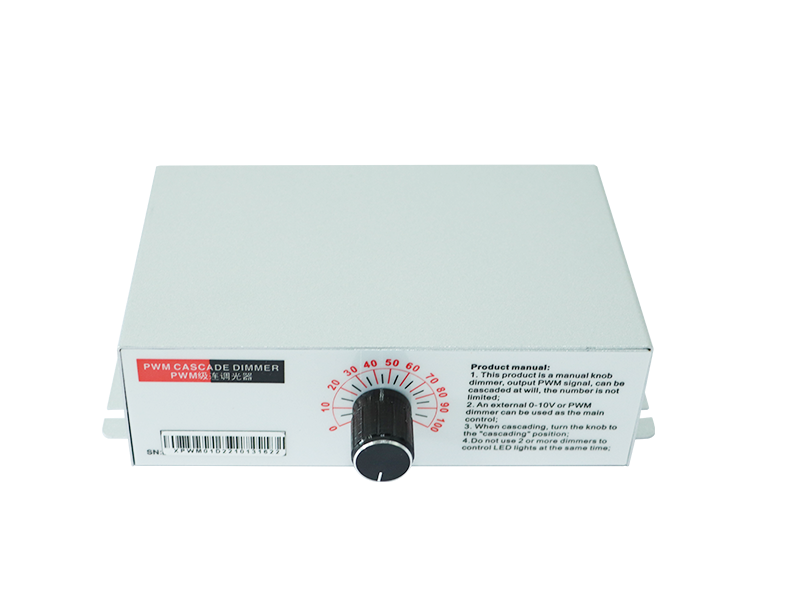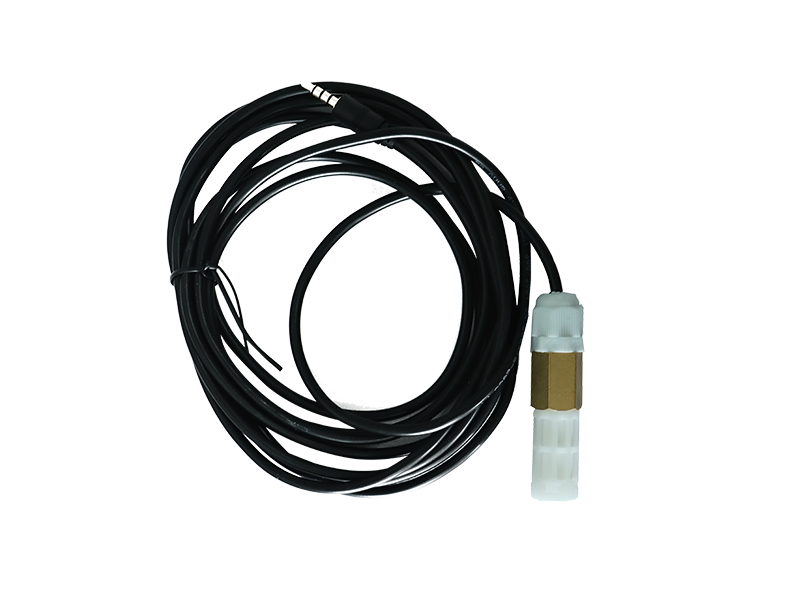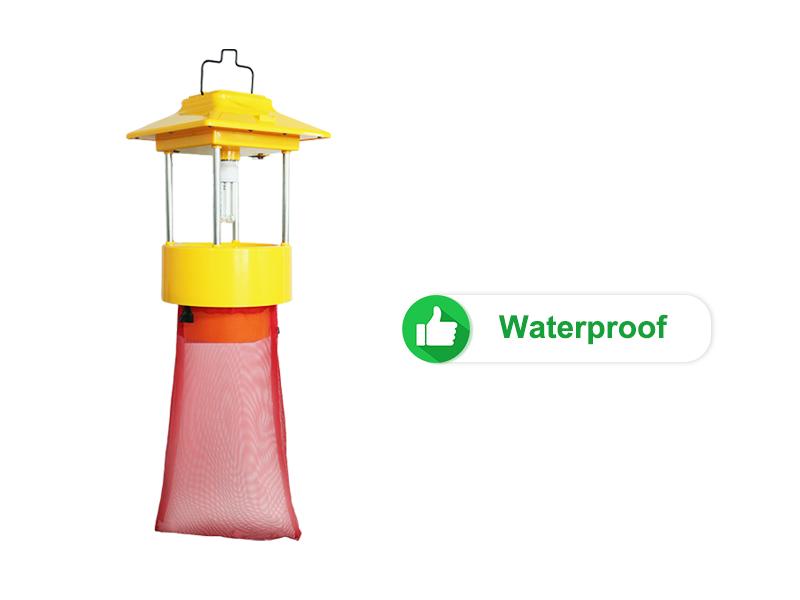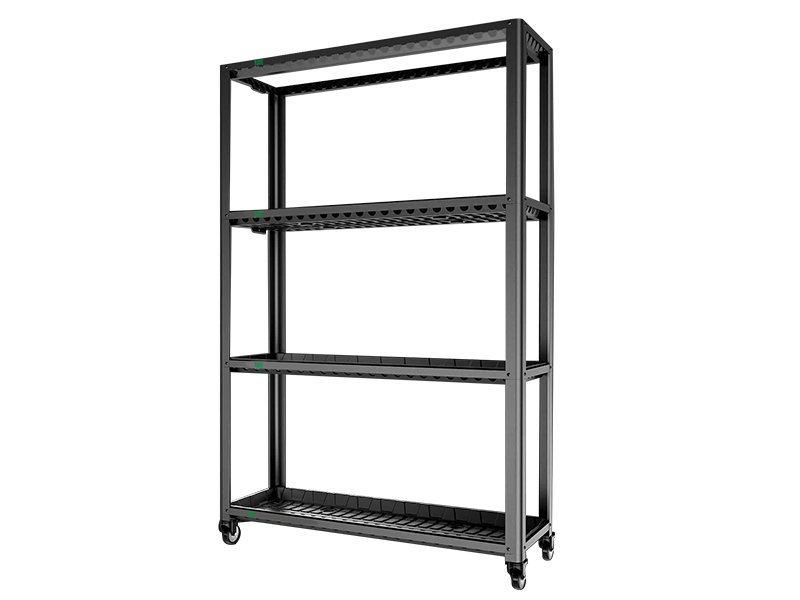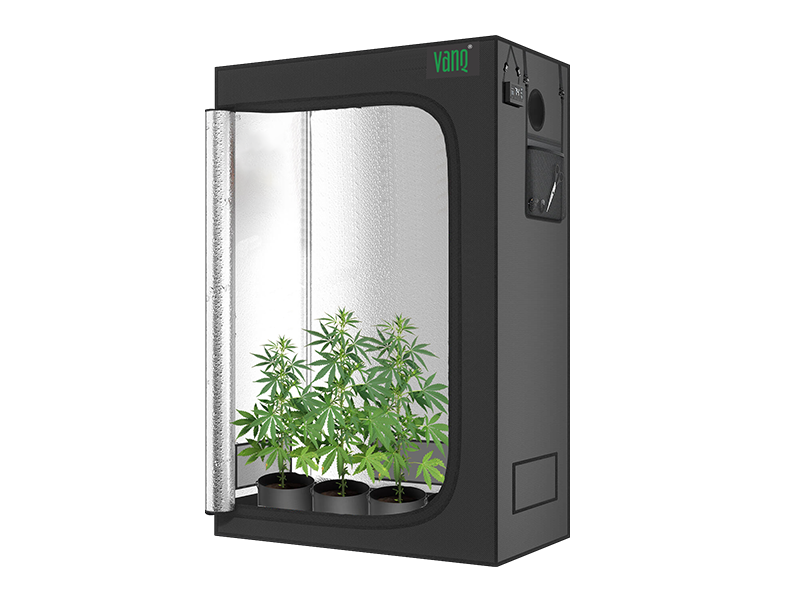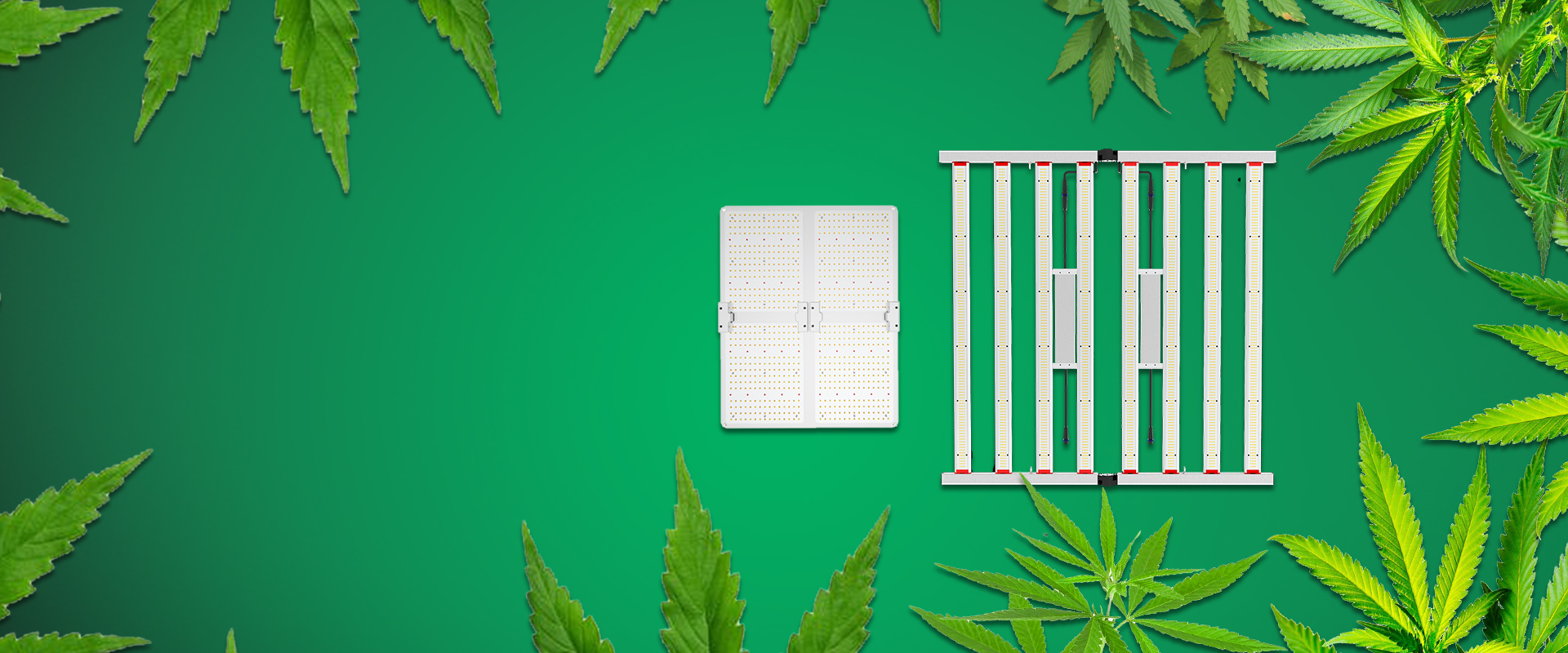Light quality can affect many physiological processes of plants, especially in terms of photosynthesis and plant morphogenesis. The rational use of specific light waves is beneficial to improving the nutritional quality of vegetables.
It is generally believed that red light is beneficial to the accumulation of carbohydrates and can promote the synthesis of soluble sugars, but is not conducive to the accumulation of soluble proteins, and blue light can promote the formation of proteins. Red and blue light help reduce nitrate absorption. The soluble sugar content of each variety of lettuce was higher under blue light or red and blue light treatment. Compared with white light, red and blue light treatment significantly reduced the nitrate content in the aerial part of the lettuce. Under the same light intensity and light time, compared with red and blue light, the red, blue and white mixed LED light can reduce more hydroponic nitrate content; under white light, the supplementary blue or green light treatment reduces nitric acid in lettuce Salt content.
Different light qualities have different effects on the formation of secondary metabolites in plant organs. Compared with the white light control, red light, blue light, and red-blue mixed light can promote the degradation rate of chlorophyll and increase the rate of carotenoids and anthocyanins in colored sweet pepper fruits, and slow down the rate of flavonoid synthesis.
Blue light can induce the accumulation of flavonoids and anthocyanins. Increasing the proportion of blue light can promote the formation of lycopene and flavonoids in tomato fruits.
Adding UV-B and blue light to lettuce at night can increase the content of quercetin in lettuce. The content of anthocyanins and carotenoids in the leaves of lettuce supplemented with ultraviolet light and blue light was significantly increased; the content of chlorophyll in lettuce was increased by blue light, and the content of total phenol and flavonoids in the leaves and the antioxidant capacity were the highest when treated with blue light at night; compared with the treatment with white light. In contrast, red light treatment significantly increased the anthocyanin content of the lettuce above ground, and blue light treatment had the lowest anthocyanin content.
Red light: white light: blue light increased the total anthocyanin content of white thresh when treated with 8: 1: 1. The total phenol content of red leaf, purple leaf, and green leaf lettuce was highest under the combination of red and blue light or white light, the content of flavonoids and anthocyanins was the lowest under red light, and the content of anthocyanins was the largest under the combination of red and blue light.
Under the condition of 100% blue light, the fresh weight of the raw menu plant can be significantly increased, and the vitamin C content is 2.25 times that of the control. The total phenol content of basil was significantly higher than that of other treatments under the light quality treatment consisting of 20% blue light, 39% green light, 35% red light, 5% far-red light and 1% ultraviolet light. Significantly increased the chlorophyll and carotenoid content of lettuce.
Red and Blue Light Improve Nutritional Quality
A large number of research results show that the combination of red and blue light improves the nutritional quality of plants significantly more than monochromatic light.
Compared with white light, the vitamin C content of lettuce and komatsuki treated with blue or red-blue light was significantly increased. Under controlled environmental conditions, red and blue light is the most suitable light treatments for increasing the content of perillaldehyde, limonene, and anthocyanins in perilla. Compared with not adding blue light, adding a certain proportion of blue light (59%, 47%, and 35%) to red light found that chlorophyll content, total phenol content, total flavonoid content, and antioxidant capacity of green leaf lettuce and red leaf lettuce were all Significantly improved.
Compared with white light treatment, red and blue combined light can promote the increase of soluble protein content in celery, while reducing nitrate content. Soluble sugar in eggplant meat and total phenol, red pigment, yellow pigment content and total antioxidant capacity in eggplant skin are also improved. .
Compared with white light, the combination of red and blue light (1: 1) increased the soluble sugar and lycopene content of fruits; the combination of red and blue light (3: 1) significantly increased the content of free amino acids and soluble proteins. Compared with other treatments, 70% red light + 30% blue light treatment can significantly increase the fresh weight of the plant and the content of chlorophyll and carotenoids.
Greenlight and Yellow-orange Light for Plant Growth
Greenlight and yellow-orange light, although there are not many related reports and researches, they also have very important physiological effects on vegetables. Different light qualities have different effects on the photosynthetic pigments of lettuce, among which β-carotene content is the highest under green light. Orange light supplementation increased the total phenol content of canola and green light supplementation increased the α-carotene and anthocyanin content. Supplementing green light can promote the accumulation of soluble sugars in lettuce and reduce nitrate content.
Ultraviolet Light and Infrared Light for Plant Growth
Ultraviolet light and infrared light also have a certain effect on the quality of vegetables. After the pea seedlings were supplemented with UV-C (254nm), their vitamin c content did not change. However, after UV-A (365nm) supplementation, the pea seedlings' vitamin C content was significantly reduced, but the flavonoid content was increased. Compared with the control, the light source without UV-B can significantly reduce the content of oxalic acid in beets.
Supplementing ultraviolet light can increase the content of phenolics and α-carotene in canola. Spinach irradiated with UV-B at 6kJ · m-2 daily had the lowest ascorbic acid content. Spinach that received 4kJ · m-2 UV-B had higher anthocyanin content. After UV-A and UV-B treatment, the content of anthocyanins in purple cabbage and green cabbage are significantly increased, and UV-B treatment is more effective than UV-A treatment in increasing anthocyanin content. The increased expression of downstream structural genes in anthocyanin biosynthesis is closely related. UV-A irradiation significantly increased the antioxidant enzyme activity of radish sprouts, and by increasing the expression of genes related to the L-galactose pathway and the activity of GLDH, the ascorbic acid content in radish sprouts was also significantly increased. The content of anthocyanins, carotenoids, and chlorophyll in lettuce leaves under far-infrared light treatment was significantly reduced. The supplementation of far-infrared light promotes the accumulation of vitamin C in lettuce and reduces the biomass and pigment content. Adding far-infrared light on the basis of red and blue light can significantly increase the total phenol, chlorogenic acid and caffeic acid content in lettuce, and the antioxidant capacity is also significantly increased.
For sprouts, it is generally believed that blue-violet light can make seedlings robust and also promote the accumulation and synthesis of antioxidants. Supplementation of UV-A and blue light can increase the content of anthocyanins in lettuce sprouts, blue light increases the content of carotenoids, supplementation of red light increases the total phenol content, and supplementation of far-red light makes the anthocyanins and analogs Both carotene and total phenol decreased.
Red and blue light treatment can increase the vitamin c content in leaves of pea seedlings. White and red and blue light treatments have higher carotenoid content in stems and leaves of pea seedlings, and the highest anthocyanin content under white light treatment. UV-B irradiation for 24 hours can promote the accumulation of kaempferol and quercetin in broccoli sprouts, and UV-B can induce the synthesis of glucosinolate (GS). UV-B and blue light can increase the total phenolic content in radish sprouts and improve the antioxidant capacity of sprouts. The chlorophyll a, chlorophyll b and total chlorophyll content of radish sprouts under red LED irradiation was the highest; blue LED could promote the accumulation of vitamin C in radish sprouts.
Compared with white light, blue light and red-blue mixed-light treatment can increase the content of amino acids, vitamin C, and total flavonoids in toon sprouts, while reducing the content of nitrate, crude fiber, and tannin. Blue light treatment is beneficial to increase the protein content and carotenoid content of pea sprouts, promote the synthesis of vitamin C, and reduce the content of crude fiber. Red light treatment can content chlorophyll, soluble sugar and crude fiber, but inhibits vitamin C synthesis.


